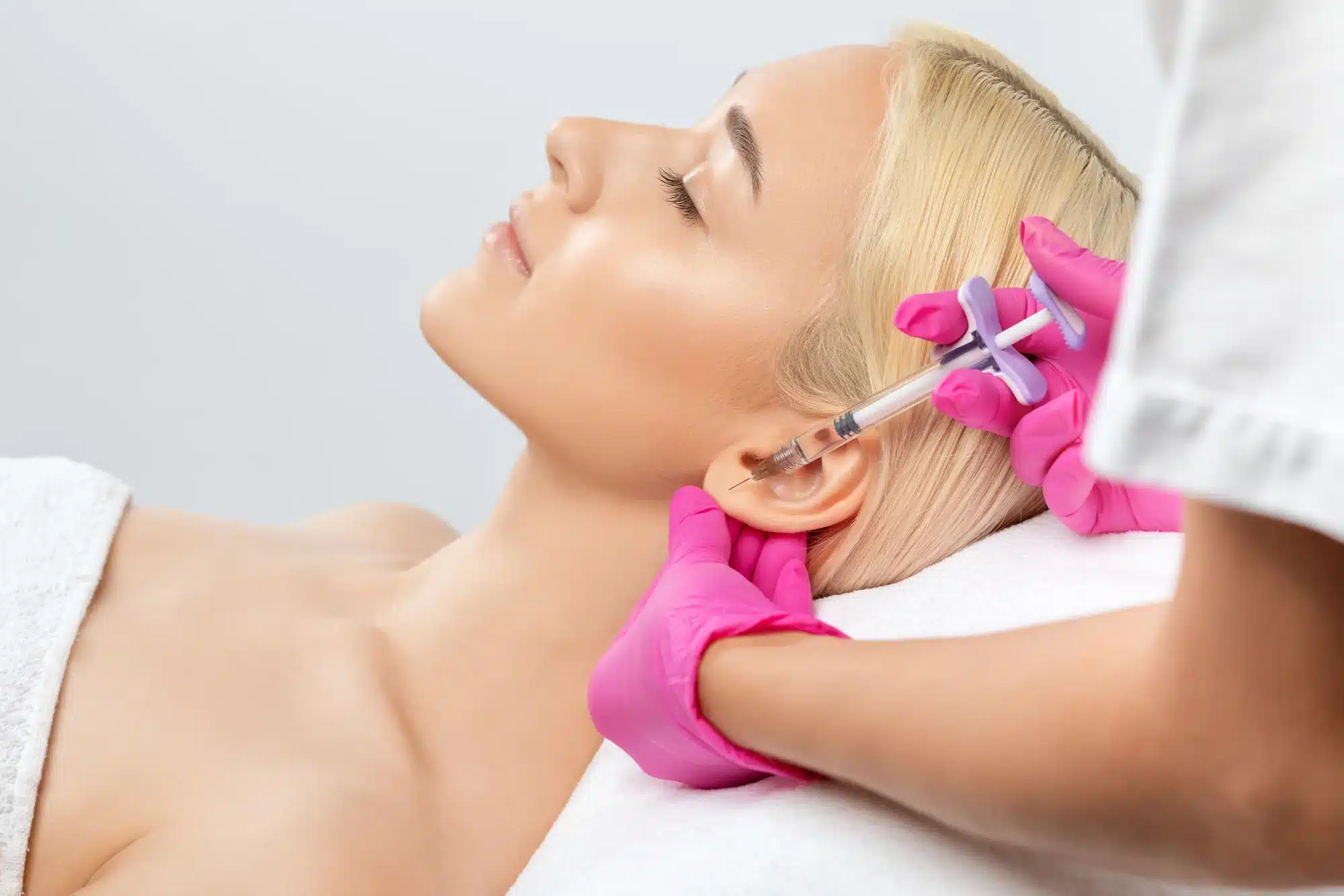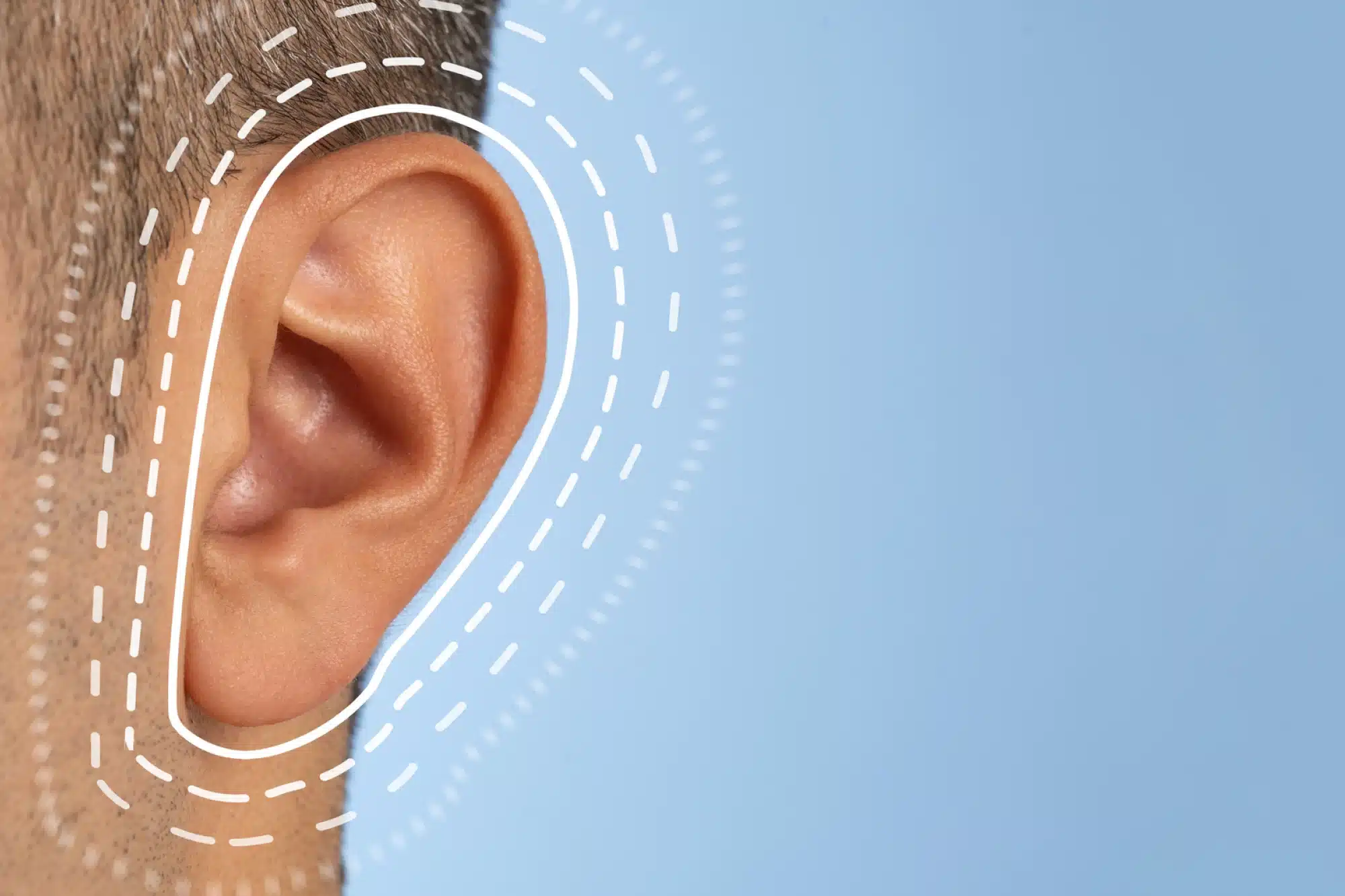Business Hours: Monday-Friday 9AM-6PM EST

Earlobe Filler Technique: How to Achieve Perfect Treatment Results
David Fuller
Last Updated On: April 23, 2024
Key takeaways
- Pre-procedural steps for the earlobe filler technique include a medical history review, informed consent, baseline photography, and filler selection (cohesive/cross-linked hyaluronic acid with lidocaine).
- Blunt-tipped microcannulas are the preferred delivery system for earlobe fillers. They minimize tissue trauma and optimize filler distribution.
- The injection technique involves retrograde threading to achieve uniform volumization and contour refinement, with careful attention to entry point selection and depth of insertion.
- Post-procedural care includes cold compress application, gentle massage, and activity restrictions.
- Research studies affirm the safety and efficacy of earlobe filler injections, with minimal side effects and duration of effect ranging from 6 to 14 months.
What Does an Earlobe Filler Do?
Similar to other cutaneous structures, earlobes exhibit a decline in collagen and elastin production with age. Extrinsic factors such as chronic ultraviolet radiation exposure and mechanical stress from repetitive earring wear also distort earlobe structure with age.
An earlobe dermal filler is a minimally invasive technique for rejuvenation that addresses the involutional changes of the earlobe.
Hyaluronic acid (HA) fillers restore volume deficit, improve skin quality by increasing hydration, and stimulate neocollagenesis. The volumization corrects flattening, elongation, and wrinkling of the earlobes and enhances their ability to support earrings without distortion or tearing.
In younger patients, earlobe fillers can be used for pre-juvenation to prevent future age-related changes.
How Do You Fill Earlobes?
Here’s a step-by-step guide to earlobe filler technique.
Pre-Procedural Considerations
Before administering earlobe fillers:
- Take a thorough medical history to identify any contraindications, such as uncontrolled bleeding disorders, active facial infections, or allergies to hyaluronic acid fillers.
- Provide a detailed informed consent document outlining the procedure, potential risks and benefits, alternative treatment options, and post-procedural care instructions.
- Capture high-resolution close-up photographs of both earlobes from multiple angles as reference points for evaluating treatment outcomes and potential asymmetries.
- Choose the right filler for the procedure. Lidocaine-containing cohesive or cross-linked hyaluronic acid fillers, such as RESTYLANE® LYFT with Lidocaine, JUVÉDERM® VOLUMA® with Lidocaine, or BELOTERO® BALANCE with Lidocaine, have superior shaping ability and longevity within the earlobe.
- Advise patients to discontinue blood thinners or medications that may increase bleeding risk for some time frame before the procedure.
Earlobe Filler Injection Technique
Blunt-tipped microcannulas are the preferred delivery system for earlobe fillers. Their atraumatic nature minimizes tissue disruption and reduces the risk of bleeding and bruising.
Use a blunt-tipped microcannula (25-27 gauge) for atraumatic delivery of the filler within the delicate earlobe tissue. Maintain a shallow depth of insertion to prevent excessive tissue injury and blood vessel damage.
The access point for the injection depends on the targeted area. There are two approaches to earlobe filler technique:
- Posterior approach: Puncture the postauricular sulcus for a minimally visible entry point.
- Anterior approach: In some cases, the anterior aspect of the earlobe may be used for direct access to specific wrinkles or deficiencies.
Use a retrograde threading approach to administer a bolus of 0.1–1.2 ml of non-animal-stabilized HA earlobe filler injection. Insert the cannula through the entry point and gently thread it in a backward direction toward the treatment zone. The retrograde path disperses filler evenly and minimizes the risk of inadvertent intravascular injection.
Maintaining a slow, steady injection technique, with intermittent aspiration to assess tissue response, ensures uniform volumization and perfect contour refinement.
In case of severe earlobe stretching or thinning, a bolus of 0.3–0.5 ml of filler may be placed deeper within the central earlobe. This bolus provides foundational support for the overlying layered injections.

Post-Procedural Care
Following earlobe rejuvenation with HA fillers, a focused aftercare regimen minimizes potential earlobe filler complications and optimizes aesthetic results. Here are some steps to discuss with your patients:
- Apply cold compresses intermittently to the treated area for approximately 15–20 minutes at a time to reduce post-injection swelling and discomfort.
- Gentle massage around the earlobe may be initiated after 24 hours to facilitate even distribution of the filler. Avoid direct manipulation of the injection site.
- Advise patients to refrain from strenuous exercise, excessive sun exposure, and saunas/hot tubs for 24–48 hours.
- If needed, prescribe oral pain relievers like acetaminophen for post-procedural discomfort.
- Schedule a follow-up appointment within 1–2 weeks to assess healing progress, address any concerns, and ensure patient satisfaction.
Is Earlobe Filler Safe?
Research studies investigating the safety of HA earlobe fillers find it to be a well-tolerated procedure with minimal side effects.
For example, a Chinese study included 19 patients who received injections between 2013 and 2015, with all patients experiencing immediate improvement in earlobe morphology.
The injected volume per ear (0.3-0.5 ml) achieved a duration of effect lasting 6–9 months. While two patients experienced mild bruising that resolved within a week, there were no reports of serious complications such as vascular embolism, infection, nodule formation, or granuloma formation.
How Long Does Filler Last in Earlobes?
Studies examining the duration of HA earlobe filler longevity have reported varying results.
In one study involving grade I and II earlobe ptosis patients treated with HA injections followed by molding, effective correction was achieved for an average duration of 14 months.
However, it’s noteworthy that five patients required touch-up procedures between four and six months post-treatment to optimize results. This indicates a potential need for periodic maintenance.
Similarly, in the Chinese study mentioned above, all patients receiving earlobe HA injections exhibited immediate postoperative improvement, with effects lasting between six to nine months.
What Is the Best Filler for Earlobes?
While there isn’t a single “best” filler for earlobes, HA fillers consistently demonstrate positive results and a favorable safety profile. Their biocompatibility and natural degradation within the body make them a well-tolerated option.
Leading HA filler brands like RESTYLANE® and JUVÉDERM® produce various formulations custom-made for delicate areas like the earlobes. These formulations have a thicker consistency to provide the necessary structure and support for effective earlobe rejuvenation.
Some of the best earlobe filler products to consider include:
- JUVÉDERM® VOLUMA® with Lidocaine
- RESTYLANE® LYFT with Lidocaine
- RESTYLANE® DEFYNE with Lidocaine
- BELOTERO® BALANCE with Lidocaine
- BELOTERO® BALANCE
Buy Authentic Earlobe Filler Products Today
You can get earlobe fillers online from multiple suppliers. However you must source authentic and high-quality earlobe fillers from trusted suppliers to ensure consistent outcomes and the safety of your patients.
That’s where we come in—explore our selection of affordable, wholesale hyaluronic acid fillers tailored for earlobe augmentation at Med Supply Solutions today. We offer only authentic products with original LOT numbers. Reach out to us for any questions regarding the LOT number.
If you have questions or require additional assistance, please feel free to book an appointment with our sales team.
References
- Arora G, Arora S. Rejuvenating earlobe esthetics with dermal fillers. J Cosmet Dermatol. 2022;21(7):2788-2792. doi:10.1111/jocd.14552
- Vedamurthy M, Vedamurthy A. Dermal fillers: tips to achieve successful outcomes. J Cutan Aesthet Surg. 2008;1(2):64-67. doi:10.4103/0974-2077.44161
- Fulton J, Caperton C, Weinkle S, Dewandre L. Filler injections with the blunt-tip microcannula. J Drugs Dermatol. 2012;11(9):1098-1103.
- Qian W, Zhang YK, Cao Q, Hou Y, Lv W, Fan JF. Clinical Application of Earlobe Augmentation with Hyaluronic Acid Filler in the Chinese Population. Aesthetic Plast Surg. 2017;41(1):185-190. doi:10.1007/s00266-016-0742-6
- Di Gregorio C, D’Arpa S. Nonsurgical treatment of earlobe aging in Mowlavi stages I and II earlobe ptosis with Hyaluronic acid fillers. J Cosmet Dermatol. 2019;18(2):508-510. doi:10.1111/jocd.12688
Products
Cart
Log In
Newsletter
Subscribe for exclusive offers and updates on new arrivals
[email protected]
Share feedback at:
[email protected]
Working Hours
Monday to Friday: 9 AM to 6 PM (EST)
Copyright 2024. Med Supply Solutions